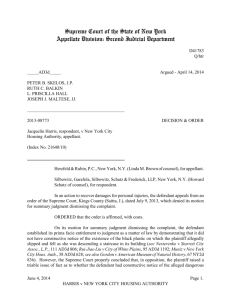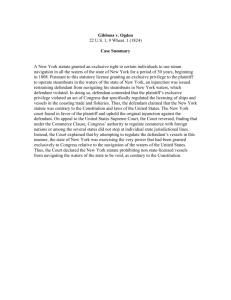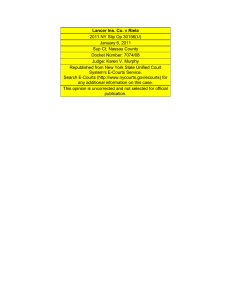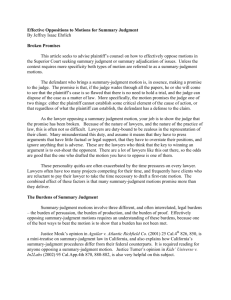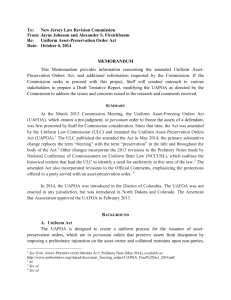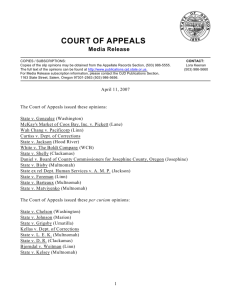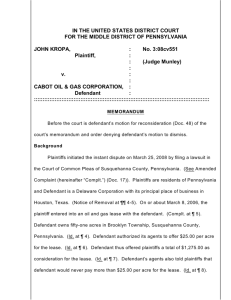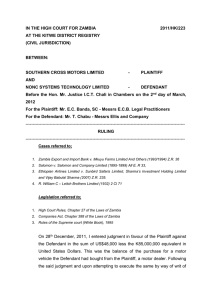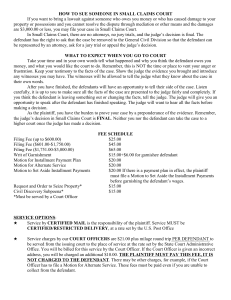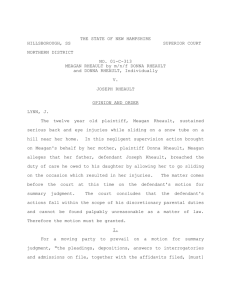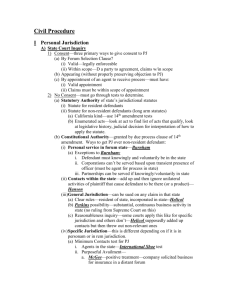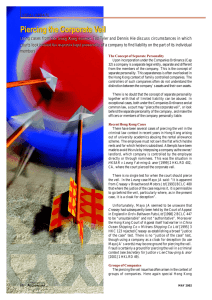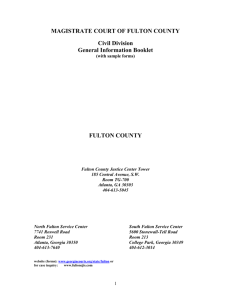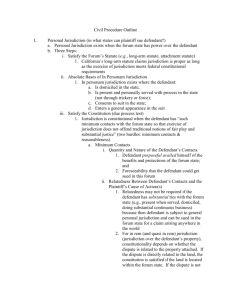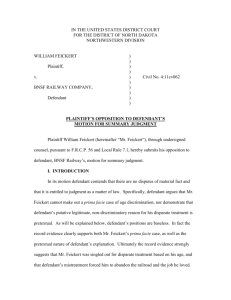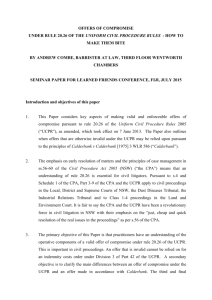Hernandez v New York City Housing Authority
advertisement
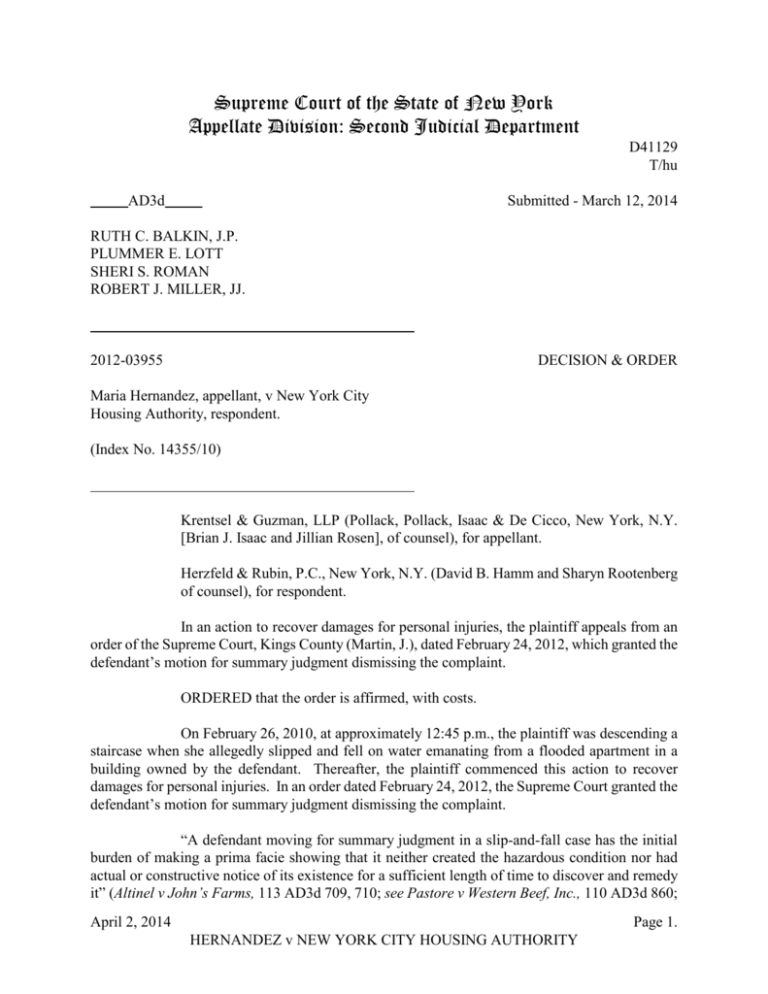
Supreme Court of the State of New York Appellate Division: Second Judicial Department D41129 T/hu AD3d Submitted - March 12, 2014 RUTH C. BALKIN, J.P. PLUMMER E. LOTT SHERI S. ROMAN ROBERT J. MILLER, JJ. 2012-03955 DECISION & ORDER Maria Hernandez, appellant, v New York City Housing Authority, respondent. (Index No. 14355/10) Krentsel & Guzman, LLP (Pollack, Pollack, Isaac & De Cicco, New York, N.Y. [Brian J. Isaac and Jillian Rosen], of counsel), for appellant. Herzfeld & Rubin, P.C., New York, N.Y. (David B. Hamm and Sharyn Rootenberg of counsel), for respondent. In an action to recover damages for personal injuries, the plaintiff appeals from an order of the Supreme Court, Kings County (Martin, J.), dated February 24, 2012, which granted the defendant’s motion for summary judgment dismissing the complaint. ORDERED that the order is affirmed, with costs. On February 26, 2010, at approximately 12:45 p.m., the plaintiff was descending a staircase when she allegedly slipped and fell on water emanating from a flooded apartment in a building owned by the defendant. Thereafter, the plaintiff commenced this action to recover damages for personal injuries. In an order dated February 24, 2012, the Supreme Court granted the defendant’s motion for summary judgment dismissing the complaint. “A defendant moving for summary judgment in a slip-and-fall case has the initial burden of making a prima facie showing that it neither created the hazardous condition nor had actual or constructive notice of its existence for a sufficient length of time to discover and remedy it” (Altinel v John’s Farms, 113 AD3d 709, 710; see Pastore v Western Beef, Inc., 110 AD3d 860; April 2, 2014 Page 1. HERNANDEZ v NEW YORK CITY HOUSING AUTHORITY Mercedes v City of New York, 107 AD3d 767, 768). “To meet its initial burden on the issue of lack of constructive notice, the defendant must offer some evidence as to when the area in question was last cleaned or inspected relative to the time when the plaintiff fell” (Birnbaum v New York Racing Assn., Inc., 57 AD3d 598, 598-599; see Fuentes v New York City Tr. Auth., 107 AD3d 845, 846; Mercedes v City of New York, 107 AD3d at 768; Armijos v Vrettos Realty Corp., 106 AD3d 847). Here, the defendant established its prima facie entitlement to judgment as a matter of law by submitting, among other things, the deposition testimony of David Aviles, the caretaker assigned to clean the subject building. Aviles testified that on the morning of the accident he inspected the subject building, including the stairwell, and did not observe any puddles or water. The defendant also submitted evidence showing that no one had complained about the condition of the staircase between the time of the inspection and the time of the plaintiff’s alleged accident (see Armijos v Vrettos Realty Corp., 106 AD3d at 847; Perez v New York City Hous. Auth., 75 AD3d 629, 630). In opposition to the defendant’s prima facie showing, the plaintiff failed to raise a triable issue of fact (see Alvarez v Prospect Hosp., 68 NY2d 320, 324). Accordingly, the Supreme Court properly granted the defendant’s motion for summary judgment dismissing the complaint. BALKIN, J.P., LOTT, ROMAN and MILLER, JJ., concur. ENTER: Aprilanne Agostino Clerk of the Court April 2, 2014 Page 2. HERNANDEZ v NEW YORK CITY HOUSING AUTHORITY





